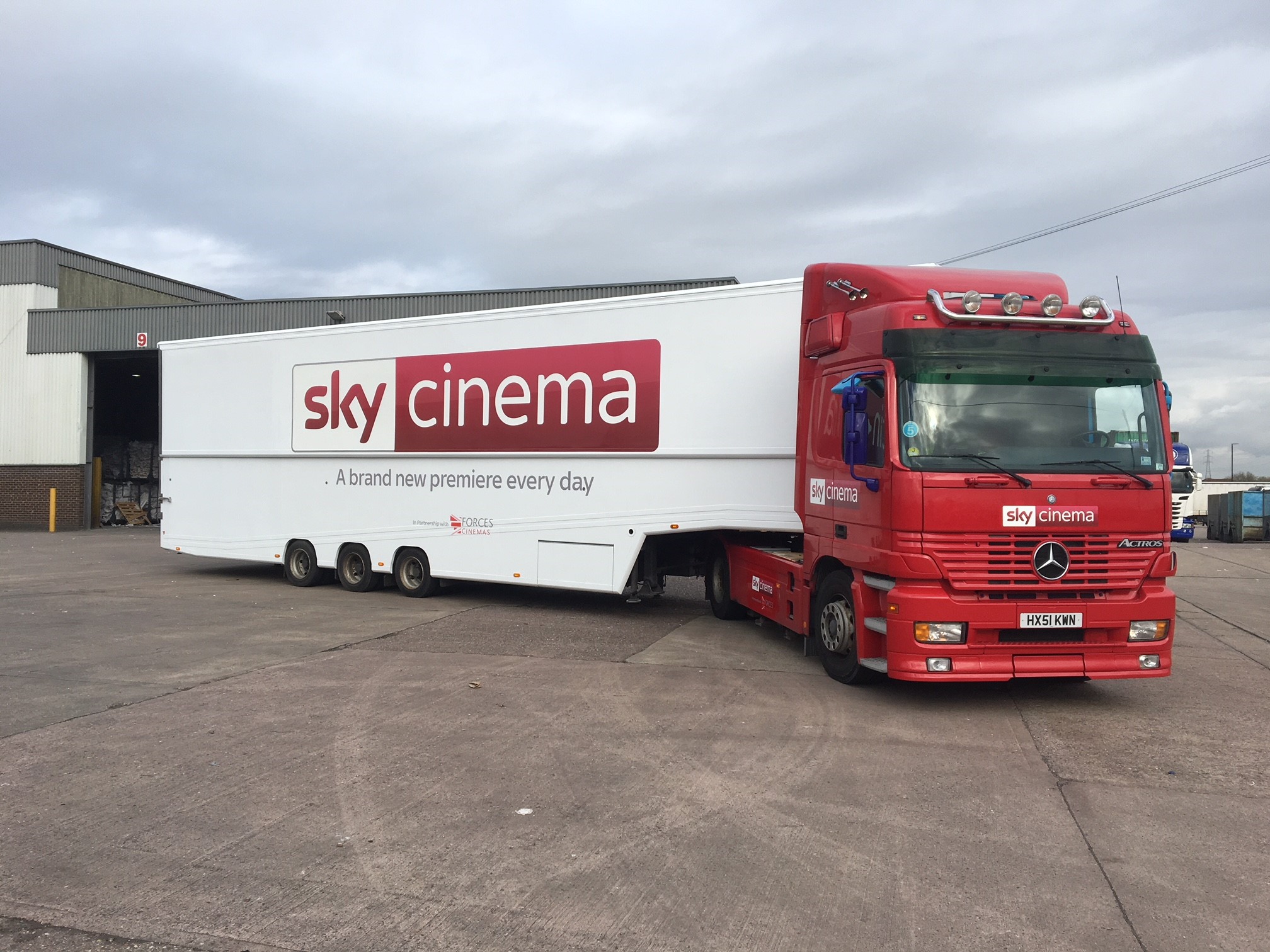Looking for some advice?
Despite the ongoing challenges presented by Covid19, we’re here to help. If you’re working on a large format project, and have any questions, please get in touch via our contact form – our expert project managers are on hand to answer any of your questions.
Vehicle fleet livery branding can be an extremely powerful tool in a marketer’s arsenal. Along with transport managers, both internal and external marketing professionals are now leveraging the branding potential of vans, lorries and cars across the country.
If your brand or your client’s business incorporates the use of a vehicle fleet, you could be missing out on a great low-cost advertising opportunity – here’s how:
The effectiveness of vehicle advertising
According to figures from the Department for Transport, commercial freight traffic has seen the greatest increase in recent years (compared with other types), and that figure is climbing year-on-year – the use of vans alone is up 38% from the year 2000. Many of these vehicles represent an untapped resource for marketing, with some estimates suggesting that in heavily populated areas such as London a vehicle advertisement could be seen by up to 3,000 people per hour.
The use of cars has risen dramatically, too – there are now seven times more cars on the road than in the 1950s and the number is still growing. Simply put, this means more people on the roads and motorways to see vehicle advertising; never before have marketers been able to reach so many eyeballs with lorry and van branding.
Exact figures for how many people on average will see a vehicle advert are hard to clarify – some experts cite CPM costs of 37p while others claim 50p for livery branding. Either way, the broad consensus is that vehicle advertising is hands-down the cheapest, best value-for-money marketing tactic (for contrast, compare with the £49 CPM to run a television advert on Channel 4 last year).
Furthermore, a study of American drivers titled The Visual Impact of Trucks in Traffic has showed that:
- 96% of drivers report noticing adverts on lorries
- 98% feel that vehicle graphics reflect positively on the company
- 96% think that livery graphics are more effective than billboards
- 75% say they are left with a distinct impression of the company in question
- 29% of drivers would make a purchase based on this impression
It’s clear that there is a very high ratio of effect to cost, making vehicle fleet livery one of the most powerful advertising strategies available to today’s marketers.
The benefits of vehicle branding
Vehicle livery has the advantages of other forms of out-of-house marketing; like a traditional billboard, it offers an advantage over television, radio and Internet advertising in that viewers can’t change the channel or block it – it is simply an innate part of their environment.
Moreover, it has the added pluses of being mobile, extremely cost-effective: you pay only once to have the advertisement put on the vehicle, and then enjoy its benefit for considerably more time than most other forms of paid marketing – essentially until you decide to have your graphics changed, or until they need replacing, which usually takes years.
Vehicle branding also offers a very broad reach at no additional cost to the client (since in general the branded vehicles would be travelling around being seen by the public as part of their usual duties either way).
Depending on the type of livery, it can have a lifespan of at least seven years, perhaps more if treated with care. However, some companies like to change their vehicle designs periodically in order to enjoy seasonal branding or to keep the fleet graphics in line with current marketing campaigns, and there are different types of printing and application techniques available for long- and short-term branding projects.
Growing brand equity with vehicle livery
In some cases, the public may not even perceive that they are essentially looking at a mobile advertisement (what else would you expect Sky Cinema to put on a lorry?) The presence of a logo, slogan or other marketing material on a passing vehicle is often accepted uncritically as an ordinary part of the environment, planting valuable brand equity seeds.
Marketers have long understood the power of brand recognition and awareness, and making the brand a seemingly natural component of the customer’s daily world in a cost-effective manner is an opportunity not to be missed. Vehicle branding can also be an integral part of a wider marketing campaign, reinforcing a brand message established through television or Internet advertising and internalising it subconsciously in the minds of the public.
Another application of livery branding is that even if your client doesn’t have access to a fleet of vans or lorries it may be possible to sponsor a logistics or transport company to wrap their vehicles with your client’s message (with sponsorship deals with taxi and car rental businesses as common approaches taken by marketers). Of course, wrapping something iconic such as a London taxi might generate additional interest from tourists.
Designing graphics for vehicle branding
For designers, creating large-format graphics to bedeck a van or lorry is a unique proposition with several key considerations. The number one thing to remember is that the final design might not be viewed flat. Especially if the project is to wrap a fleet of smaller vehicles, the contours and corners of the cars can distort and project strange shadows onto the artwork, so be sure to allow for this during the design stage, and ensure you have the right schematics or blueprints to hand. (How would the car look with all of its doors open? Don’t fall into the trap that one popular coffee brand, pictured below, did…)
As with most out-of-house (OOH) marketing, it’s also important to remember clarity. The design must be clearly readable quickly and from a distance – even if the vehicle isn’t moving, the viewer may be! Simple shapes, strong colours and uncluttered design elements work best for vehicle wraps, allowing the artwork to pop from a distance.
Another aspect to consider is that there may be a variety of potential contexts in which the design must work. Is a grey or beige design going to be noticed in the city? Is a green design going to work in the countryside? Will a dark design read properly at night? Traditional OOH billboard marketing may allow you some insight into where the artwork will be viewed, but this doesn’t necessarily apply to vehicle livery – designing vehicles that will read well in all scenarios may require careful planning of colours and composition.
In conclusion, if you’re looking to deliver a powerful marketing strategy for your client, you would be wise to consider vehicle fleet livery – its high effectiveness and low cost, not to mention the boost to the company’s brand equity, should make it a confident addition to your game plan.





